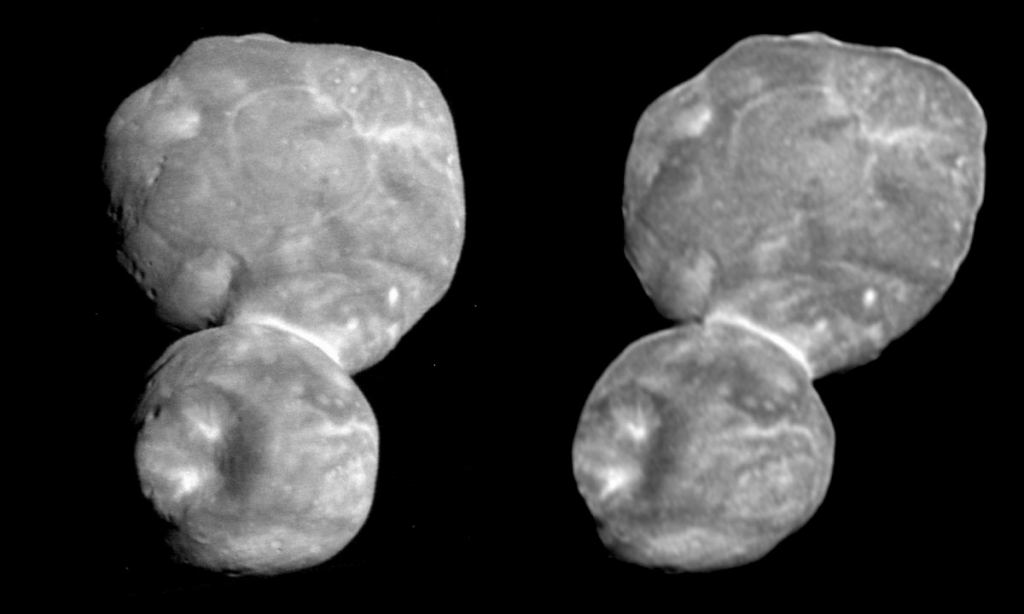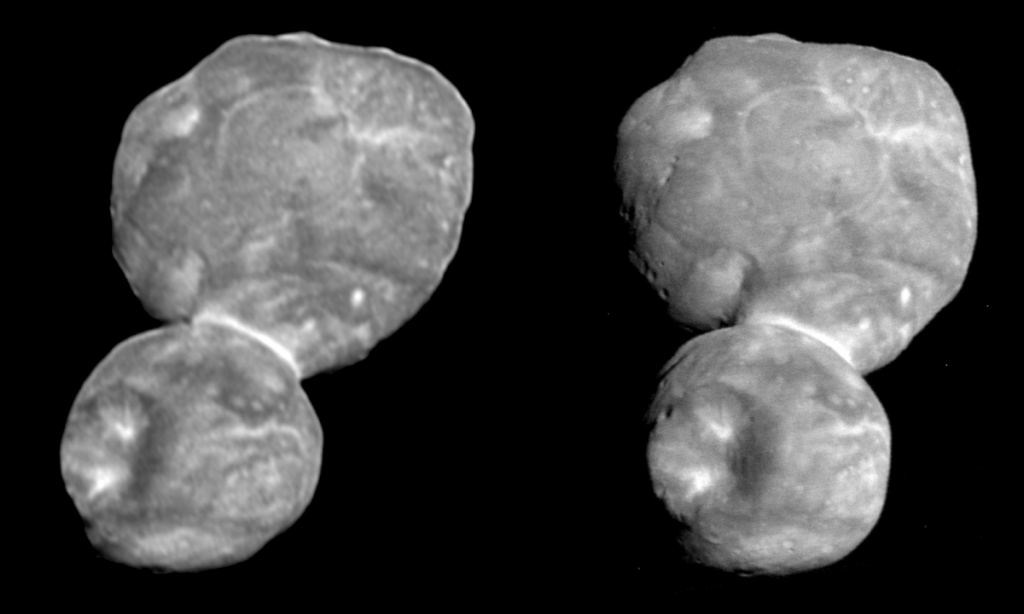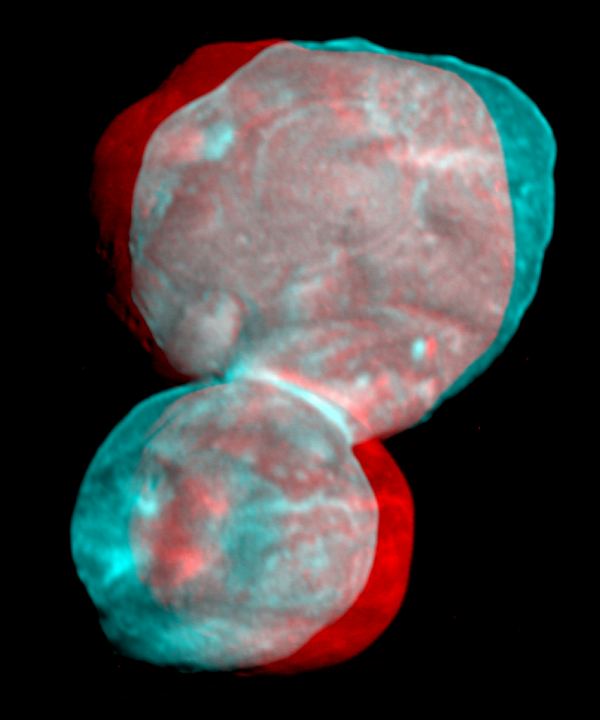Got your 3D glasses handy? Then prepare for the most realistic views of Ultima Thule yet! Yes, it seems that every few weeks, there’s a new image of the Kuiper Belt Object (KBO) that promises the same thing. But whereas all the previous contenders were higher-resolution images that allowed for a more discernible level of detail, these images are the closest we will get to seeing the real thing up close!
Like all 3D images, the effect was created by combining two processed images that were taken by the New Horizons mission at slightly different angles. Both were snapped by the spacecraft’s Long-Range Reconnaissance Imager (LORRI) at 05:01 a.m. and 05:26 a.m. Universal Time (1:01 a.m. and 1:26 a.m. EDT) on Jan. 1st, 2019 (10:01 p.m. and 10:26 p.m. PST on Dec. 31st), respectively.
As Alan Stern, the New Horizons mission Principal Investigator from the Southwest Research Institute (SwRI), said in a recent JHUAPL press release:
“These views provide a clearer picture of Ultima Thule’s overall shape. including the flattened shape of the large lobe, as well as the shape of individual topographic features such as the “neck” connecting the two lobes, the large depression on the smaller lobe, and hills and valleys on the larger lobe.”

The spacecraft was at a respective distance of 28,000 km (17,400 mi) and 6,600 km (4,100 mi) from Ultima Thule (aka. 2014 MU69), which offered original resolution scales of 130 m (430 ft) and 33 m (110 ft) per pixel. By pairing or combining these images, a 3D image is created by what is known as the “binocular effect” – where the slight separation of our eyes allows us to see the two images as a single three-dimensional one.
The team created three different sets of “binocular” images. In the first, the two views are tinted blue and red and stacked. When viewed through a set of red-blue stereo glasses, the images appear as one. In the second, the images are arranged parallel to each other and the 3D effect is achieved by looking “through” them. In the third, the 3D effect is accomplished by looking at the two images cross-eyed.
The earlier sequence had a slightly different viewing direction from the later set, and has a resolution per pixel that is about four times higher than the later set. In fact, this set (which was released on Feb. 22nd) is the highest-resolution images of Ultima Thule obtained by LORRI to date. But because of the shorter exposure time, the image quality is lower than with the previous set.

The combination, however, allowed for a stereo view of the object that is far better than anything that the team could create previously. As John Spencer, the mission’s deputy project scientist from the SwRI, added:
“We have been looking forward to this high-quality stereo view since long before the flyby. Now we can use this rich, three-dimensional view to help us understand how Ultima Thule came to have its extraordinary shape.”
The New Horizons mission made history for the second time when it conducted its flyby of Ultima Thule on January 1st, 2019. As the first KBO ever to be visited by a spacecraft, scientists expect to learn a great deal from it. As material left over from the earliest days of the Solar System, the study of this object will shed light on how the planets formed roughly 4.5 billion years ago and how they’ve subsequently evolved.
In the coming years, the mission team hopes to conduct another flyby of a KBO at the outer edge of the Kuiper Belt. This is scheduled to take place sometime in the 2020s, if all goes well. And once its flybys are complete, the team hopes to turn New Horizons around to face Earth so it can capture the latest “Pale Blue Dot” image of our home! Exciting times lie ahead!
Further Reading: JHUAPL

